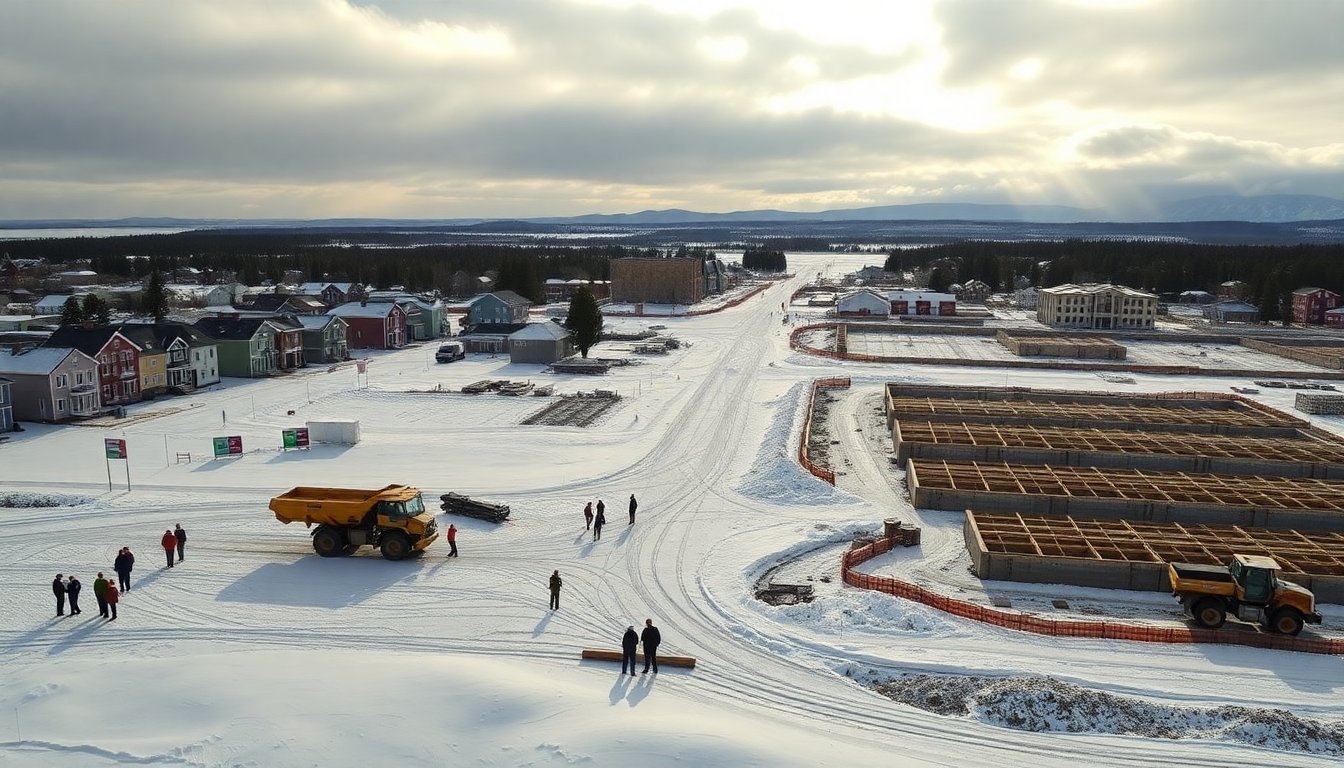Table of Contents
In the far north of Sweden lies Kiruna, a city renowned for its vast deposits of iron ore and rare earth minerals. As the mining industry expands, the very foundation of Kiruna has come under threat from the consequences of extraction.
To address this dilemma, an extraordinary initiative has been set in motion: the entire city center will be relocated several kilometers away. This ambitious project not only aims to preserve the city but also to secure its economic future in a rapidly changing landscape.
The challenges of mining and relocation
With the mining operations in Kiruna advancing deeper underground, the city’s infrastructure is at risk of significant damage. The ground beneath Kiruna has been gradually shifting, creating a pressing need for action. As cracks appear and buildings are compromised, city officials are faced with a monumental decision: how to save a city that sits atop immense mineral wealth while ensuring its inhabitants remain safe.
Government and community response
In response to this crisis, local authorities, in collaboration with mining companies, have devised a comprehensive plan to relocate the city. This initiative not only involves moving homes and businesses but also preserving the community’s rich cultural heritage.
The relocation project emphasizes the importance of maintaining community identity while adapting to the new geographical realities.
Building a new Kiruna
Construction of the new city center is already underway, with plans for modern amenities and infrastructure that cater to both existing residents and future generations.
The design process has involved significant input from the community, ensuring that the new Kiruna reflects the values and aspirations of its citizens. The hope is to create a sustainable urban environment that balances the need for economic growth with respect for nature.
Environmental considerations
As Kiruna transitions to its new location, environmental sustainability is at the forefront of the planning process. The relocation project aims to minimize ecological impact, integrating green spaces and efficient public transport systems into the urban layout. By prioritizing sustainable development, Kiruna aspires to set an example for other cities facing similar challenges worldwide.
Economic implications of the relocation
This ambitious relocation project is not merely an engineering feat; it also holds significant economic implications. Kiruna’s economy heavily relies on mining, and securing a stable environment for mineral extraction is critical for its long-term viability. The new city center is expected to provide opportunities for economic diversification, attracting new businesses and industries that can thrive alongside traditional mining operations.
Moreover, the relocation project has been met with considerable interest from investors and stakeholders looking to support sustainable practices in the mining sector. By investing in Kiruna’s future, they are not only ensuring the city’s survival but also positioning themselves at the forefront of the evolving landscape of resource management.
A model for future cities
The relocation of Kiruna presents a unique case study for other communities grappling with similar challenges. As climate change and resource depletion continue to pose threats, the lessons learned from Kiruna’s experience may guide future urban planning and development strategies. By embracing innovative solutions and community engagement, cities can navigate the complexities of environmental and economic pressures.
Ultimately, Kiruna’s journey is more than just a relocation; it is a testament to human resilience and adaptability. The city stands as a beacon of hope, demonstrating that with thoughtful planning and collaboration, it is possible to harmonize the demands of industry with the needs of the community and the environment.





